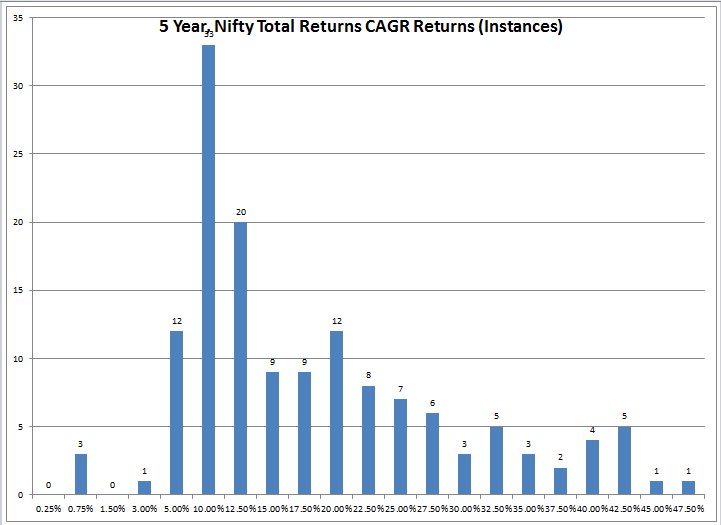Source:Prashanth
Tag: Nifty
Nifty
Jayant Manglik of Religare Securities recently wrote an article where he predicts that Nifty will cross 6600 by Dec this year.In the article, he states “our valuations are reasonable. Nifty price to book is at multi-year lows,”
I thought it would be interesting to see how the Nifty P/B fared over the years:
The current P/B of 3.07 is is certainly higher than the 5 year low hit on 27 Oct, 2008 when it was 2.12.The current P/B is however is slightly lower than the 5 Year average of 3.28 and 5 Year Median of 3.3
Top 5 Worst Performing Nifty Stocks
This post is in continuation of my 5Stocks Series (see here).
The worst performing Nifty stocks this year so far (31 Dec, 2012-March 05, 2013) are:
- JPAssociat (-28%)
- Siemens (-25.03%)
- Hindalco (-24.5%)
- Ranbaxy (-22.1%)
- JindalStel (-21.26%)
Watch out below
In an earlier post,I had mentioned the importance of the Nifty breaking its 200 DMA.
Now that Nifty has finally broken its 200 DMA, watch out below !!
Nifty below its 200 DMA.Should we care?
Nifty is hovering around its 200 DMA of around 5152.
The 200 DMA holds a special attraction for market observers and technicians.
Typically, if the index goes below 200 DMA, it indicates bearish times ahead and if it goes above 200 DMA, it indicates bullish times.
Is this backed by research/empirical data?
The short answer is YES.
Mebane Faber is the co-founder and the Chief Investment Officer of Cambria Investment Management.
He has authored an excellent paper titled “A Quantitative Approach to Tactical Asset Allocation”
This paper is a must read for all market observers.In this, a timing approach is compared with a simple buy and hold approach.
In the buy and hold approach, the investor simply buys the index and holds it thru thick and thin.
In the timing approach, the following simple rules are followed:
BUY RULE
Buy when monthly price > 10-month SMA.
SELL RULE
Sell and move to cash when monthly price < 10-month SMA.
The paper demonstrates the superiority of the timing approach over the buy and hold approach
The catch is effect of commissions,impact costs etc is ignored while computing the returns.In the long run, I am sure they will make a difference.
But the fact remains that avoiding the markets when they fall below the 200 Day DMA enables one to sit out the worst of the bearish times.

